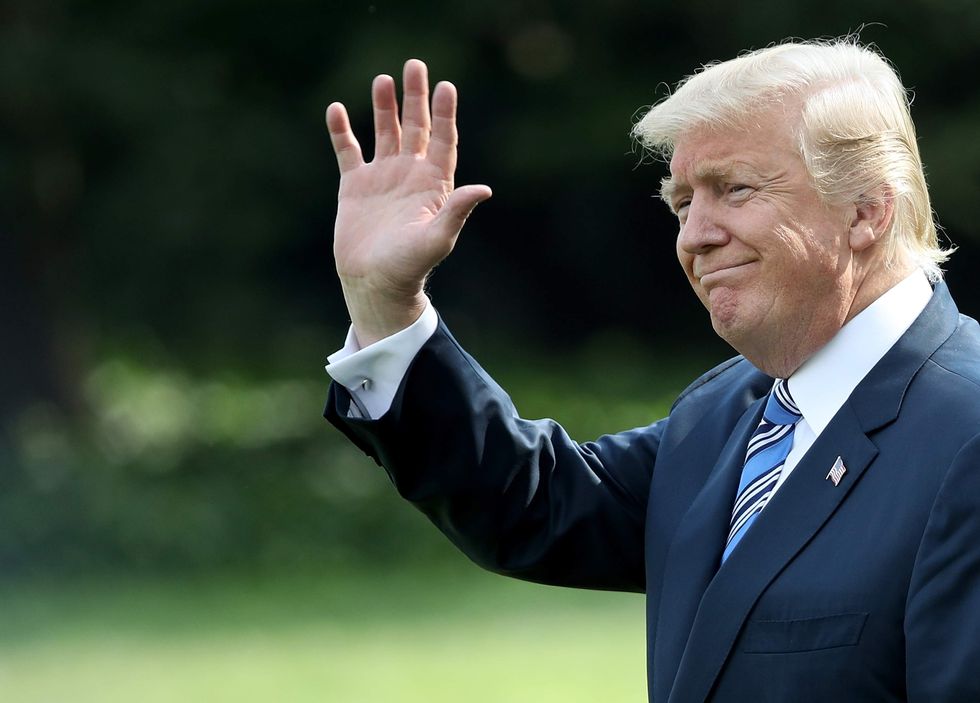
President Donald Trump has violated a fairly unknown rule barring the Executive Branch from commenting on the jobs report until one hour after it is released. (Win McNamee/Getty Images)

President Donald Trump on Friday broke a federal rule that bars anyone in the federal government from commenting on the monthly jobs report for at least one hour.
According to the U.S. Department of Commerce's Bureau of Economic Analysis, the White House is not allowed to comment on the publicly-released data for at least one hour:
All employees of the Executive Branch who receive prerelease distribution of information and data estimates as authorized above are responsible for assuring that there is no release prior to the official release time. Except for members of the staff of the agency issuing the principal economic indicator who have been designated by the agency head to provide technical explanations of the data, employees of the Executive Branch shall not comment publicly on the data until at least one hour after the official release time.
The report was released at 8:30 a.m. EST and said the economy added 209,000 nonfarm jobs in July.
President Trump took to Twitter not even 15 minutes later to issue his statement.
Sean Spicer broke the rule back in March when the February jobs report was posted. Twenty-two minutes after the report was released, Spicer sent a tweet congratulating the President for the 235,000 new jobs that were added.
“Great news for American workers in first report for @POTUS Trump,” Spicer tweeted.
According to the Federal Register, the rule was put in place to keep the administration from making the numbers political:
The intent of the directive is to preserve the time value of such information, strike a balance between timeliness and accuracy, prevent early access to information that may affect financial and commodity markets and preserve the distinction between the policy-neutral release of data by statistical agencies and their interpretation by policy officials.
The rule, known as the Office of Management and Budget's Statistical Policy Directive No. 3, was adopted in 1985.
(H/T The Hill)